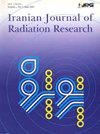鼻咽癌患者在容积调制电弧治疗(VMAT)中的适应性方法
Q4 Health Professions
引用次数: 0
摘要
背景:接受放射治疗的头颈癌患者表现出显著的解剖和剂量变化,尤其是在治疗的后期。本研究的目的是评估自适应容量调制电弧疗法(VMAT)治疗方案对局部晚期癌症(NPC)患者的剂量测定效果。材料和方法:10名接受VMAT治疗的患者在15次分割后进行了第二次计算机断层扫描(CT2),以应用新的适应计划。已经生成了将原始治疗计划配置波束应用于第二CT扫描的混合计划。对混合方案和适应方案的剂量-体积直方图(DVH)进行了比较。结果:在治疗3周结束时,CT2显示GTV N70体积显著缩小(45.2%),左右腮腺体积缩小(分别为21.1%和20.6%)。与最初的计划相比,混合计划显示,输送到目标体积GTV N70的剂量减少了15.2%,左右腮腺的V30分别增加了47.3%和25.6%。然而,脑干和脊髓的D2没有显著差异。结论:我们的适应性VMAT方案在GTV N70覆盖率和腮腺无毒剂量方面提高了剂量测定结果。本文章由计算机程序翻译,如有差异,请以英文原文为准。
Adaptive approach for nasopharyngeal carcinoma patients during Volumetric Modulated Arc Therapy treatment (VMAT)
Background: Patients with head-and-neck cancers receiving radiotherapy show significant anatomical and dosimetric changes, especially during the latter part of treatment. The aim of this study is to evaluate the dosimetric effects of an adaptive Volumetric Modulated Arc Therapy (VMAT) treatment protocol for patients with locally advanced nasopharyngeal cancer (NPC). Material and methods: Ten patients treated with VMAT have benefited from a second computed tomography scan (CT2) after 15 fractions in order to apply a new adapted plan. A hybrid plan has been generated applying the original treatment plan configuration beam to the second CT scan. The dose– volume histograms (DVHs) of hybrid and adapted plans have been compared. Results: At the end of the 3 week of treatment, CT2 shows a considerable shrinkage of GTV N70 volume (45.2%) and a diminution of the left and right parotid glands volume (21.1%, 20.6% respectively). Compared to the initial plans, hybrid plans reveal that the dose delivered to target volume GTV N70 decreased by 15.2%, and the V30 of the left and right parotid glands increased by 47.3% and 25.6% respectively. However, there is no significant difference for the D2 of the brainstem and spinal cord. Conclusion: Our adaptive VMAT protocol improves dosimetric results in terms of GTV N70 coverage and nontoxic doses to parotid glands.
求助全文
通过发布文献求助,成功后即可免费获取论文全文。
去求助
来源期刊

Iranian Journal of Radiation Research
RADIOLOGY, NUCLEAR MEDICINE & MEDICAL IMAGING-
CiteScore
0.67
自引率
0.00%
发文量
0
审稿时长
>12 weeks
期刊介绍:
Iranian Journal of Radiation Research (IJRR) publishes original scientific research and clinical investigations related to radiation oncology, radiation biology, and Medical and health physics. The clinical studies submitted for publication include experimental studies of combined modality treatment, especially chemoradiotherapy approaches, and relevant innovations in hyperthermia, brachytherapy, high LET irradiation, nuclear medicine, dosimetry, tumor imaging, radiation treatment planning, radiosensitizers, and radioprotectors. All manuscripts must pass stringent peer-review and only papers that are rated of high scientific quality are accepted.
 求助内容:
求助内容: 应助结果提醒方式:
应助结果提醒方式:


